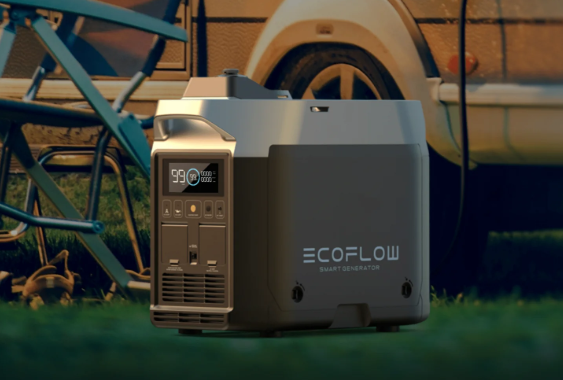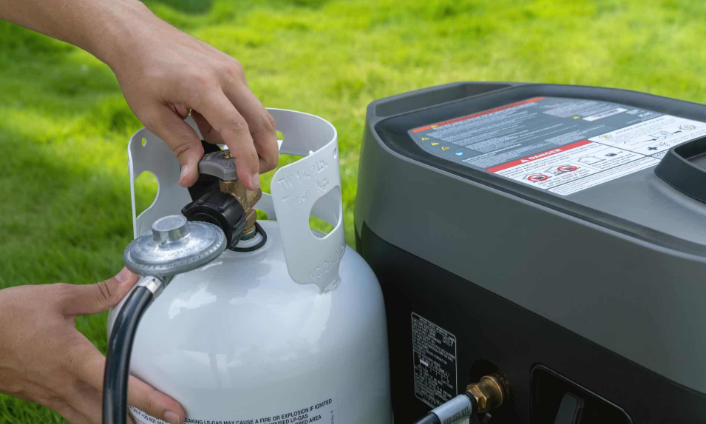How Do You Run Electricity to Your Shed?
Adding electricity to your shed makes the space much more useful, turning it from simple storage into a workshop, office, or studio. With power, you can run tools, install proper lighting, and even add heating or AC for year-round use. This project adds real value and convenience to your property, but it requires careful planning to be done safely and correctly. You'll need to determine your power needs, check local codes, and choose the right installation method.
Steps to Plan for Running Electricity to Your Shed
A good plan is essential for a safe electrical installation. Rushing the planning stage can lead to an undersized system, expensive rework, or dangerous code violations. The two main parts of planning are calculating your power needs and checking local regulations.
Determine Your Power Requirements
First, list all the items you plan to power in the shed, such as lights, power tools, a mini-split for climate control, or a mini-fridge.
Next, find the wattage for each device, which is usually printed on its label. For power tools, note both the "running wattage" (continuous power) and the higher "starting wattage" (the initial surge to turn on). For instance, a table saw might run at 1,800 watts but require 3,500 watts to start.
To find your baseline power requirement, add up the wattage of everything you expect to run at the same time. It's also smart to plan for the future. If you might add a larger tool later, include its wattage in your calculations now to avoid overloading your circuit down the road.
Check Local Codes and Permits
Before you buy any materials or start digging, you must contact your local building department. All electrical work is regulated by the National Electrical Code (NEC) and state or local rules designed to ensure safety.
Officials there will tell you the specific requirements for running power to an outbuilding. You will almost certainly need to get a permit, which documents the project and allows for an official inspection. The inspection verifies that the work is done to code, protecting you and your property. Skipping this step can lead to fines and could create issues with your homeowner's insurance.
How to Choose the Right Power Source for Your Shed
There are several ways to connect your shed to the power grid. Which choice is best for you relies on how you plan to use the space, how much power you need, and your budget.
Use a Heavy-Duty Extension Cord
An outdoor extension cord can work for short-term tasks that don't need much power, like running one light or a small tool. However, this isn't a long-term fix. Cords can be dangerous if you trip over them, they don't hold much power, and bugs or weather can damage them. They aren't good for a business or any other place that needs steady power.
Connect to Your Home's Electrical Panel
This is the best and most usual way to install something permanently. An underground wire is run from the main panel of your home to a subpanel in the shed. This makes a specialized, high-capacity service. This lets you have more than one circuit for lights and outlets, and it can hold big things like an air conditioner or table saw. It's the safest option, but it's also the most difficult, costly, and only a professional electrician can connect the solar panels.
Install a Solar Power System
Getting power from the sun is an excellent, eco-friendly way to live off the grid. With panels, a charge controller, batteries, and an inverter, you can power your home without being linked to the grid. This is great for sheds that are remote or for people who don't want to dig trenches. The main problems are that it costs a lot to start up and needs sunshine to work. It will cost a lot of money to get a system strong enough for big tools.
Use a Portable Generator
A generator is an easy and quick way to get power for short periods of time for certain chores. It's a useful option for using power tools sometimes. Generators, on the other hand, are loud, need fuel all the time, give off fumes, and need to be serviced regularly. They are not useful for giving an office or workshop constant, quiet power.


How to Run Power from Your Home to Your Shed
Connecting your shed to your home's electrical panel is a project that requires precision and careful attention to safety codes. While you can do some of the work yourself, like digging the trench, any tasks involving the main electrical panel should be left to a licensed professional.
Dig the Trench to the Correct Depth
You will need to dig a trench from your house to the shed for the underground wire. According to the National Electrical Code (NEC), the required depth varies based on the type of wire or conduit you use. Always confirm the specific depth with your local building official before you start.
Common depth requirements are:
- 24 inches deep for direct-burial UF-B (Underground Feeder) cable.
- 18 inches deep if the wire is protected inside PVC conduit.
- 6 inches deep if the wire is protected inside rigid metal conduit.
After laying the cable or conduit, place a warning tape in the trench about a foot above the line before you backfill the dirt. This will alert anyone who digs there in the future.
Install the Wiring, Breaker, and Subpanel
A new, dedicated circuit breaker must be installed in your home's main panel to feed power to the shed. The amperage of this breaker (for example, 30-amp or 50-amp) must match your calculated power needs.
If you plan to have more than one circuit in the shed (e.g., one for lights and another for outlets), you are required to install a subpanel in the shed. A detached building with a subpanel also needs its own grounding system, typically two long copper rods driven into the earth.
Hire an Electrician for Panel Connections
The connection of the feeder cable to the breaker in your home's main panel and the wiring of the new subpanel are critical safety points. This work is dangerous and complex. To ensure the system is safe, functional, and up to code, you should always hire a licensed electrician for these connections.
How to Set Up Solar Power for Garden Shed
For a solar setup, you need to calculate your energy needs based on daily consumption (watt-hours), not just peak wattage.
Calculate Your Daily Energy Needs
For each appliance, multiply its wattage by the number of hours you expect to use it per day. This gives you its required "watt-hours" (Wh). For example, a 10W LED light used for 4 hours consumes 40 Wh.
Sum the watt-hours for all devices to find your total daily energy requirement. This figure, along with your area's average daily sunlight, determines the size of the solar panel array and battery bank you need. A small 100-200 watt system may be fine for lights and charging a laptop, but a workshop with power tools could require a system of 4,000 watts or more.
Install the Key Components
A solar power system has four main parts that you will need to install:
- Solar Panels: Mount solar panels where they will receive maximum direct sunlight, usually the shed's roof.
- Charge Controller: The panels connect to a charge controller, which manages the flow of electricity to the batteries and prevents them from overcharging.
- Battery Bank: Batteries store the power from the panels, allowing you to have electricity at night or on cloudy days.
- Inverter: An inverter converts the DC power stored in the batteries into the AC power that most standard appliances and tools use.
Perform Regular Maintenance
Solar systems require minimal but important upkeep. To maintain efficiency, keep the panels clean from dirt, leaves, and snow. If you have lead-acid batteries, you may need to periodically check and top off their water levels.
Essential Safety Rules for Shed Wiring
Regardless of the power source you choose, your top priority must be electrical safety. Follow these critical rules:
- Grounding: Any system with a subpanel must be properly grounded to the earth at the shed. This is a vital life-safety feature that provides a safe path for stray electrical current during a fault, preventing shocks.
- Weatherproofing: All exterior components, including outlets, junction boxes, and conduit, must be weatherproof and rated for outdoor use to protect against moisture. For maximum safety, all outlets must have GFCI (Ground Fault Circuit Interrupter) protection, which automatically cuts power to prevent electric shock.
- Overload Protection: Every circuit must be protected by a correctly sized circuit breaker or fuse. This prevents wires from overheating and causing a fire if a device draws too much current.
A licensed electrician will ensure all these safety measures are implemented correctly and according to code. This professional oversight is the best way to guarantee your project is both safe and reliable.


Power Your Shed Project Safely!
Adding electricity to your shed makes it much more useful, changing it from a place to store things into a hub of activity. A well-thought-out plan is essential for any project, whether you choose the dependability of a grid link, the freedom of a solar setup, or the ease of use of a generator. Carefully figure out how much power you'll need, talk to the building department in your area, and put safety first above all else. Hiring a licensed electrician is the smartest thing you can do for any job that involves your home's main panel or complicated wiring.
FAQs About Running Electricity to Your Shed
Q1: Can I run electricity to my shed without a permit?
It is highly unlikely. Most municipalities require a permit for running a new electrical line to an outbuilding to ensure the work is done safely and to code. Proceeding without one can lead to fines and safety hazards.
Q2: How far can I run electrical wire to a shed safely?
The distance affects voltage drop, where voltage decreases over a long wire run. To counteract this, you may need to use a thicker gauge wire for longer distances. An electrician can calculate the appropriate wire size for your specific distance and power load to ensure equipment runs properly and safely.
Q3: Is solar power enough to run large tools in my shed?
Yes, but it requires a substantial and expensive system. Running high-wattage tools like table saws or air compressors necessitates a large solar panel array, a powerful inverter capable of handling high startup loads, and a large-capacity battery bank. A small, basic solar kit will not be sufficient.
Q4: Can I connect my shed’s electrical system to my home’s breaker panel without an electrician?
This is strongly discouraged unless you are a qualified professional. Working inside a main electrical panel is extremely dangerous and can be fatal if done incorrectly. It also requires a deep knowledge of electrical codes. Always hire a licensed electrician for this part of the job.
Q5: What do I do if I encounter electrical issues in my shed?
If your breakers trip frequently, lights flicker, or you notice any signs of electrical problems, turn off the power at the shed's disconnect or subpanel immediately. Do not attempt to diagnose complex issues yourself. Call a licensed electrician to troubleshoot and repair the problem safely.